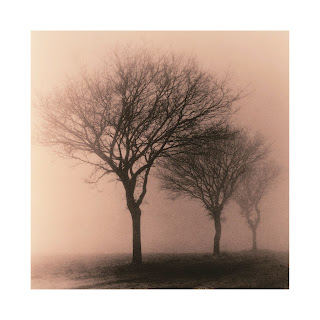Four + One: Different Prints (including hand colored)

This print I call 4+1 I made last year in Holme Fen. It has stuck with me as a nice image and I have included it in my Three Wood Lands photobook . The first time I printed it I took a test print and hand colored it . It looked alright but I cropped out the flaws in photoshop so it needed to be done again at some point. 4+1 Blog Post Cover Image (Cold Tone) I had read somewhere that for hand coloring prints it is preferable to use a warm tone image. I set about combining the need to make a better hand colored version with an experiment with sepia toning and hand coloring. I made 4 different prints. Normally I make these prints for hand coloring a half or full stop lighter so the color has a chance to shine. For all the images I used Ilford MG Art 300 paper as it has a cotton rag base and the texture is much like watercolor paper. This paper is my favorite for hand coloring with pencils as the rough texture takes the color easily. I developed them all with Moersch Eco 4812 which has a




